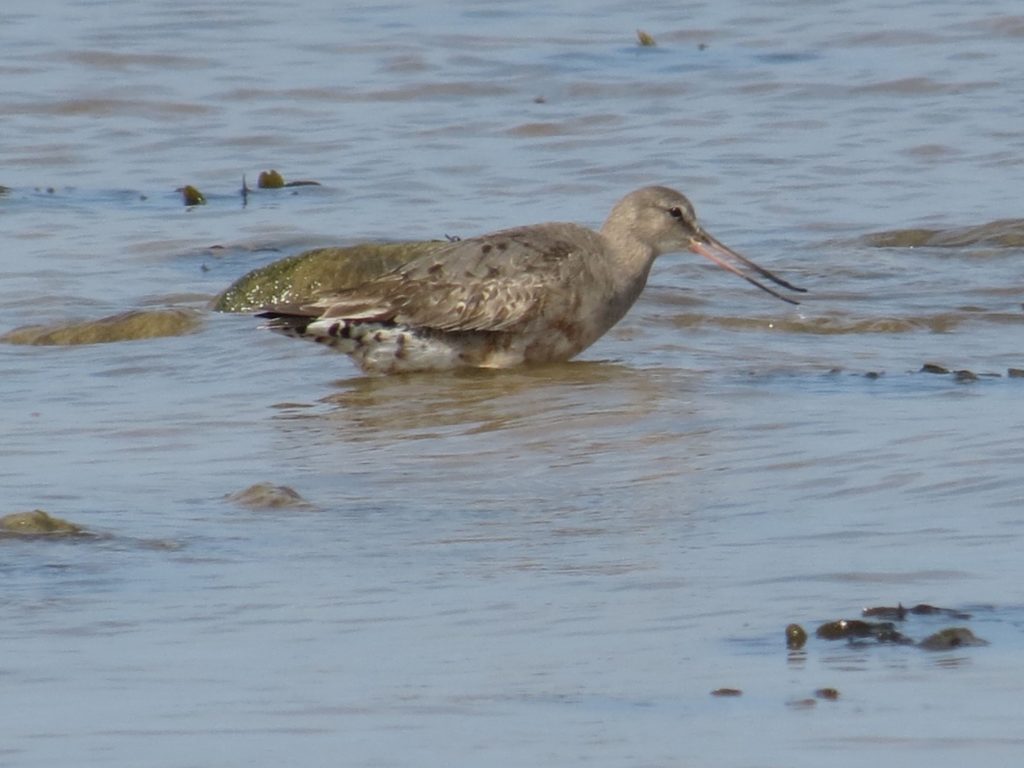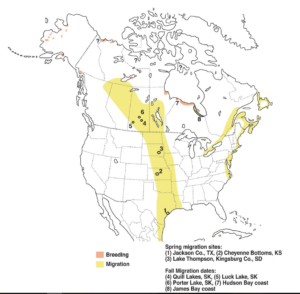Hudsonian Godwit now threatened
Hudsonian Godwit was added to the growing list of threatened wildlife species by the Committee on the Status of Endangered Wildlife in Canada (COSEWIC) during deliberations last week. It is the eighth shorebird species to be added to the COSEWIC list.
COSEWIC is an independent body of species scientists who have the responsibility of assessing and attributing a status to Canadian wildlife species. COSEWIC meets twice annually to assess and assign status to Canada’s ever-growing list of species under review. Once COSEWIC attributes a status of either Special Concern, Threatened or Endangered, the Federal government has six months to rule on whether the species is added to one Schedule One of Canada Species at Risk Act (SARA). Once that happens, the species then has the added power of federal law to contribute to its recovery.

Figure 1 from the Macaulay Library, Cornell Labratory of Ornithology, Birds of North America
why the Hudsonian Godwit’s survival is threatened
The Hudsonian Godwit has many life-history characteristics that render its populations vulnerable to habitat loss, climate change impacts, and pollution. For starters, its breeding range is restricted to a small area along the Hudson Bay coast, a small area along the Beaufort Sea near the Mackenzie River delta, and some scattered locations in western Alaska. The more restricted the range of a species, the more vulnerable it is to localized catastrophic events like a severe storm or fire. Its global population is estimated at 50,000 to 70,000 birds.

Climate change is happening at an accelerated rate in the Arctic, and it is likely that a combination of melting permafrost, sea level rise and drought is already impacting Godwit productivity. Challenges only get greater along its tremendous migration route, a 20,000 to 30,000 km round trip from the Arctic to southern tip of South America. Godwits are known to fly thousands of kilometres non-stop from James Bay or the Atlantic Coast to the northern coast of South America. Loss and degradation of habitat, pollution and disturbance from humans are all threats that undermine the viability of essential stopover sites along its migration route.
Nature Canada knows this species well
It is one of the focal species in our work to support Cree Nations along southern James Bay with their own conservation efforts. For example, about 10% of its global population is known to stopover along the coast of the Moose Cree First Nation, contributing to the status of this coastline as Pei lay sheesh kow a candidate Western Hemisphere Shorebird Reserve Network site. Other areas around James Bay also support significant numbers of the species on migration, particularly the delta and associated coastline near the mouth of the Albany River, which is believed to support about 20% of the species population.
Nature Canada has worked with the Cree Nation of Waskaganish since 2012 to identify important shorebird habitat along their coastal region, leading to recognizing the Miinshtuk-Wiinebek IBA, a new Important Bird and Biodiversity Area on James Bay. We have also found large numbers of Hudsonian Godwits in the area in flocks of up to 350 individuals.
We hope to continue this work further north with the Cree Nation of Wemindji where more areas of importance to the Hudsonian Godwit and other threatened species can be identified and protected.
what canada needs to do
By finding out these birds are stopping during their epic migrations, and ensuring that area is safe and that the local population is engaged in stewardship and able to provide the species habitat needs, we are able to contribute to the species recover. Stopover habitat is like the links in a chain. Each link is essential to the chain’s existence. Shorebirds depend upon networks of these chains of stopover sites for their survival. The sites can easily become degraded from human activity, from upstream pollution, from oil and chemical spills, from invasive species, or from competing human activities.
Canada needs to step up to recognize the critical sites in Canada, like James Bay, and support the indigenous nation’s efforts to recognize and protect these sites.



